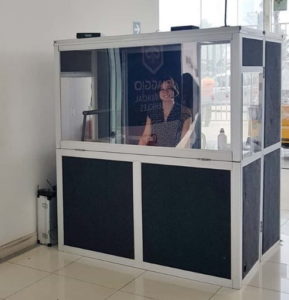Both translators and interpreters work with words. Translators with written words. Interpreters with spoken words. That is the main difference.
The other main difference is how and where we work.
Translators have great flexibility in terms of location– they can be at their office, a coffee place, the living room. The only need a computer to get in touch with their clients around the world. Everything is done electronically.
Interpreters, on the other hand, usually need to be where their clients are. Whether they are sitting next to them at a business meeting, a trade-show, a press conference, etc., or if they are in the “booth” at a large conference or training session.
The current pandemic situation has forced us all to adapt to new ways of working and interpreters are not the exception.
Since the beginning of the lockdown, I have interpreted via Zoom, Google Hangouts, Teams, WebEx and even Facetime. This works fairly well for CONSECUTIVE INTERPRETATION, in which the speaker talks for a few minutes while the interpreter takes notes. Then the interpreter conveys the speech into the other language.
When simultaneous or instant interpretation is needed, things can get trickier because the interpreters need to speak at the same time as the speaker. So we need two audio channels: one for the speaker, one for each of the interpreters.
So far, I have used a combination of Teams, WhatsApp, Zoom and Google Hangouts to provide this service. These are makeshift solutions, but they have worked for meetings of up to one hundred people. It is important that both interpreters have professional audio equipment, a high quality microphone and an audio mixer, so they can listen to each other and also the main speaker. In my experience, this makes a lot of difference during the simultaneous interpretation.
Here is an image of my current setup:
The other alternative is using an ad-hoc solution: a Remote Simultaneous Interpretation platform. I have tested Voiceboxer, Interprefy, and Kudo (I am certified on the last two) but there are many more out there. The advantage of these are platforms is that they were made specifically for remote interpretation and they work. For large events like online conferences or professional training sessions, these solutions are the best option.
Whatever your language needs are, let me know how can I help you.
Claudia Alvis
www.alartranslations.com
+51 966 670 310 / +1 (405) 759-4957
English-Spanish translations. Lima, Peru.



